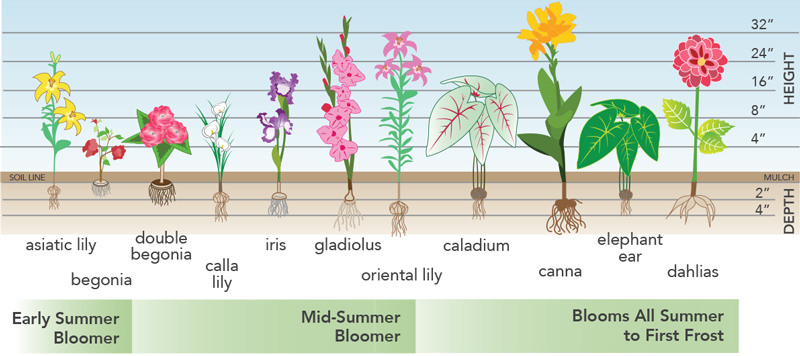Extend Your Garden’s Beauty: Practical Guide to Bloom Time Extension

Some gardens stop you in your tracks. You know the kind: the riot of color that keeps changing, weeks after your neighbor’s petunias fizzled out; a roses-and-peonies border that looks as lush in September as it did in June. None of that is an accident—or luck. It’s years of trial, error, and careful orchestration. Over three decades and four wildly different growing zones, I’ve been obsessed with extracting every last day from a bloom season (and wringing my hands over every misstep). This isn’t just another “deadhead and water” checklist—it’s a field guide built on failed experiments, surprising revelations, and hard-won routines.

If you’re tired of blooms fizzling before summer even hits its stride—or if you simply want to see what’s possible when you treat bloom extension like a craft—pull on your boots. Let’s walk through what actually works.
Why Most Gardens Fade Too Soon (And How to Crack the Code)
The first lesson I learned the hard way: even perfect weather can’t save poor planning or generic care. My rookie year in Denver, I had one breathtaking week of tulips…followed by six months of green emptiness. The mistake? Planting for instant gratification instead of building for endurance.
The Real Mechanics Behind Bloom Time
Flowers don’t exist to please us—they’re survival tools designed to attract pollinators at precise moments. Once those genetic marching orders are fulfilled, plants turn their attention to seeds and roots. Extending their show means gently disrupting these natural handoffs or giving them reasons to “think” there’s still work to do.
Insider Truths:
- Genetic ceiling: Some varieties will never be marathoners (no matter how much Epsom salt Aunt Joan swears by).
- Environment dictates limits: Even rebloomers take breaks in heatwaves unless you buffer stress.
- Care makes or breaks: Timing deadheads vs letting seed pods form is often more powerful than fertilizer choice.
Dialogue With a Mentor:
“You can’t talk a peony into acting like a salvia,” my old neighbor Gus told me one muggy July afternoon as he surveyed my drooping beds. “But you can nudge both into lasting longer—if you listen close enough.”
Start With Strategy: Building Your Extended-Bloom Blueprint
I always begin each season with two lists:
- Reliable All-Stars: Plants I know will pull double-duty if treated right.
- Wildcards for Experimentation: At least one variety outside my comfort zone (last year it was ‘Fanfare Blaze’ blanket flower—three flushes between May and September!).
1. Choose Genetics Like A Pro
Don’t trust marketing tags alone—dig for specifics:
| Category | Top Performers (Tested Over Years) | Notes from the Field |
|---|---|---|
| Annual | Profusion zinnias, Supertunia Vista | Zinnias recover from drought with heavy mulch; Supertunias only flop if waterlogged |
| Perennial | Rozanne geranium, Moonbeam coreopsis | Coreopsis likes lean soil—overfeed & flowers dwindle |
| Shrub | Knock Out rose, Hydrangea paniculata | Paniculatas take late pruning well; Knock Outs tolerate city grit but need iron chelate in clay soils |
Unexpected insight: Sometimes it's not about more blooms but sequenced blooms—see “Layered Planting” below.
2. Engineer Your Environment
After losing half my coneflowers in a record-hot July (2012), I started treating microclimates as assets:
- Edging beds with river stones stores daytime heat for cool nights—perfect for prolonging late-summer asters.
- Mulch depth matters: 2 inches keeps annual roots happy; perennials prefer 3+ inches especially heading into August scorchers.
- Shade cloths aren’t just for pros—draping tomatoes during hot spells bought me three extra weeks of marigold bloom last season.
Sensory Detail:
In high summer, the scent under thick cedar mulch is sharp and earthy—the surest sign roots are content while petals keep unfurling.
3. The Art—and Urgency—of Deadheading
Deadheading isn’t glamorous until you see what happens when you neglect it: entire stands halt blooming overnight because energy diverts toward seed pods before you notice.
My Method (after various failures):
- Use Felco #6 pruners (the only brand that doesn’t chew soft stems).
- Work section by section every Thursday evening—the cool air helps wounds heal faster overnight.
- For cosmos/dahlias: pinch back with gloved fingers early AM after dew dries; they’ll set buds lower down almost immediately.
- For geraniums: snap off at the base where stem meets main stalk—not just spent petals!
4. Feed—but Don’t Suffocate
Here’s where most guides go wrong: overfeeding = lush leaves but stingy flowers.
After burning young phlox in ‘17 with bargain blue granules (“bloom booster!”), I now use:
- Compost tea every month during active bloom
- Espoma Flower-tone scratched lightly around base at planting
- Skip synthetic nitrogen entirely once buds appear except on heavy feeders like cannas
If watering costs worry you (my city hiked rates by 40% last drought)—mulch + drip irrigation pays off quickly; last summer I spent $28 less/month compared to overhead sprinklers while keeping calibrachoa happy from June through frost.

Advanced Tactics That Turn Ordinary Into Jaw-Dropping
I wish someone had handed me this playbook twenty years ago:
A) Succession & Layered Planting
Think like a stage manager—not every star performs at once.
Stepwise Example:
- Early spring: Chionodoxa underplanted among perennial salvia (salvia hides bulb foliage as it matures)
- Summer: Add direct-sown cosmos between fading allium heads
- Late summer/fall: Pinch-backs stagger sedum ‘Autumn Joy’ so half blooms late August, half mid-Sept
Result? From March crocus scent on frosty mornings to October bees buzzing sedum heads—you get action all year.
B) The Chelsea Chop & Friends
It sounds cute but delivers drama—a technique borrowed from British gardeners where perennials get whacked by one-third around late May (“Chelsea” refers to flower show timing).
Plants like phlox, asters, rudbeckia respond with bushier growth and staggered blooming—in trials here, chopt plants extended color up to 17 days longer than uncut neighbors!
C) Manipulating Daylength Indoors
Want continuous amaryllis or orchids indoors? Try rotating two sets under cheap LED shop lights ($35 investment):
- Set timer for 14 hours light/10 dark March-May
- Stagger start times by four weeks for overlapping waves
This trick tripled winter blooms on clivia miniata—invaluable during gloomy months.
D) Staged Sowing/Transplanting Edibles
With edibles like nasturtium or borage thrown into borders:
- Sow batches at three-week intervals starting post-frost
- Replace laggards midseason without leaving bare patches
Not only does this feed pollinators longer—it fills culinary cravings straight through fall!
Tools & Resources Only Insiders Know About
Forget cutesy gadgets cluttering garden center aisles—here’s what actually earns its keep:
- Felco #6 pruners – ergonomic grip saves wrists during long deadheading sessions
- Drip line kit w/ digital timer – Rain Bird kits are idiot-proof even if plumbing baffles you
- Soil moisture probe – no more guessing; $15 prevents both rot and wilt
- Floating shade covers – Agribon AG19 fabric extends pansy/begonia life deep into steamy July
Apps worth using:
- Gardenize: Lets me compare photos/bloom logs from past seasons side-by-side before ordering new seed
- Planter: Visual drag-and-drop planning means never overcrowding again
(Downside? Expect tech hiccups occasionally after updates.)
Book shelf essentials:
The Well-Tended Perennial Garden by Tracy DiSabato-Aust taught me nearly everything about pruning timing beyond trial-and-error heartbreak.
Real Garden Scenarios That Changed My Mindset
Nothing teaches quite like seeing what survives your own mistakes—or learning from others who’ve already blundered!
A) Shade Border Redemption
My earliest shade bed collapsed mid-June until I started weaving Japanese painted fern among repeat-bloom impatiens (‘Rockapulco’ series). By alternating Astilbe chinensis and late-planted tuberous begonias behind them—with monthly seaweed tea feeds—I built a border that drew compliments straight through September despite oppressive humidity and sudden cold snaps.

B) Urban Potager Marvel
A friend in Chicago juggles patio containers using calendared reminders (“swap violas for marigolds June 5th!”). Her secret? Lightweight root pouches lined with biochar keep roots airy while feeding with diluted fish emulsion biweekly—a system that lets her run sweet peas AND trailing nasturtiums without midsummer burnout.
C) Rose Revival On A Budget
When budget forced our neighborhood park off chemical fertilizers, we switched hybrid teas out for Buck roses (‘Earth Song,’ ‘Carefree Beauty’) pruned just after Memorial Day parade each year…and added shredded bark mulch scavenged free from local tree crews instead of buying bags retail ($0 vs $8/bag). Blooms lasted an extra month—and maintenance dropped by half.
Troubleshooting Quick-Fixes From Years In The Trenches
Problem-solving comes down to swift diagnosis and knowing which lever moves fastest:
| Symptom | Typical Cause | Immediate Solution |
|---|---|---|
| Buds drop before opening | Sudden dry spell; thrips | Deep soak + inspect undersides w/ hand lens |
| Green leaves but zero flowers | Too much N fertilizer | Flush soil + switch to low-N organic feed |
| Flowers fade prematurely | Afternoon sun too intense | Stake temporary lattice/shade cloth |
| Wilting despite moist soil | Root rot starting | Remove mulch temporarily + prune away mushy roots |
Whenever something stumps me these days, I jot date/symptom/weather context in my journal so patterns reveal themselves next time—even five years later!
Year-Round Action Plan For Relentless Bloom Power
Here’s how I approach every single growing season now:
- Walk beds mid-winter noting gaps/prolonged bare spots from prior photos/journal entries
- Order seeds/tubers by sequence rather than impulse color scheme (“March–July,” “June–Sept”)
- Amend soil early April with leaf mold & slow-release organic granulars
- Mulch deeply before summer dries out beds—not after cracks appear
- Calendar biweekly deadhead/weeding sweeps (set phone reminders!)
- After first major flush fades (~late June), cut back hard any reblooming perennials/shrubs
- Sow replacement annuals by mid-July wherever space opens up
- Record notes/photos monthly—including weather curveballs—to spot avoidable problems next round
- Set aside budget/time each autumn for tool sharpening/replacement
Bonus move? Trade seeds/divisions yearly with neighbors—you’ll discover varieties perfectly adapted locally that catalogs overlook.
Final Reflections From Thirty Seasons In The Dirt
Mastering extended bloom isn’t about chasing perfection—it’s about stacking small wins until your garden feels perpetually alive regardless of setbacks or surprises (and trust me…hailstorms happen!). What separates enduring displays from fleeting shows is relentless observation and willingness to tweak based on lived experience—not just following rules blindly.
Let yourself experiment boldly each year—with intention! If something fails spectacularly? Celebrate the learning curve over wasted effort—it’ll fuel better choices next spring.
Remember:
Your climate has quirks no book can predict;
Your hands notice subtleties no app replaces;
Your garden wants creativity more than rigid formulas.
Keep questioning advice—even mine—and personalize relentlessly until those colors hold fast long after others have faded away.
Now get outside—and help your patch write its own encore! If obstacles crop up or stubborn cases baffle you, reach out anytime—I’ve probably wrestled that same beast somewhere along the way…and solved it eventually too.
Here’s to gardens that refuse an early curtain call—and gardeners who won’t settle for anything less!



